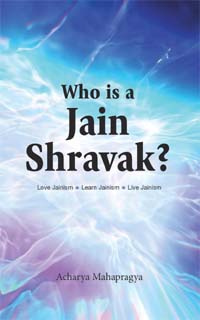Secure the Tradition of Memorizing the Knowledge
The current generation has seen the advent of computers and technology at the expense of memorizing anything. Memory cells in the brain have contracted because of dependency on the technology. The new generation counteracts, 'Why should we memorize? It is senseless and likely to cause headache. What is the point in wasting time in memorization when we will ultimately forget everything in a short span of time?' This ideology is slowly gaining a strong footing and spreading from person to person. Such mindset will affect the next generation and consequently, the human race will become highly dependent on gadgets.
AcharyaTulsi continually searched for the solution to each problem in order to refute the challenges arising from the deterioration of memory power. He indicated towards a list of the topics to memorize for safeguarding the tradition of memorizing:
'Jain Tattva Pravesh' aur 'Pacchis Bol' mukhasth ho,
Amrit Kalash hkitaab ghar ghar mein padhein vishvast ho.
Gyaanshaala chale har pur tattva-bodh-vikaas mein,
Terapanth-Prabodh ka sangyaan harshollaas mein.
gambhir gyaan hit nischit 'Pustak-Panchak',
taattvik geeton ke gunje svar romaanchak
'Sambodh' aur 'Shravak-Sambodh' svayambhu,
padahte smriti-path mein rahe Sudharma Jambu.
In the above verses AcharyaTulsi has emphasized on memorizing of at least two literary works – Pacchis Bol and Jain Tattva Pravesh. In this series Kaalu Tattva Shatak, Tattva Charcha, Karmprakriti, Laghudandak, Ikkees Dvaar, Baavan Bol etc. can be included. In earlier times, ladies without any formal education used to memorize many scriptures merely by listening. Can highly educated people of today not memorize even three or four?
Amrit Kalash, a treatise distributed in three volumes is a compilation of the topics that are meant to be read, memorized and learnt by heart. The perusal of this book is essential from both viewpoints -utility and to know the authentic facts.
'Gyaanshaala' is a platform for the formation of moral values or sanskaar in children. Gyaanshaala is the best approach to protect and secure the children from the attack on moral values due to influence of social media and modern technology. The relevance of Gyaanshaala can be proved on the basis of the talent of trainer and the process of training.
'Terapanth Prabodh' is a special hymn-work composed by AcharyaTulsi. Life and philosophy of AcharyaBhikshu along with the history of Terapanth has been presented exquisitely. The primary objective of this creation is 'Dhamma Jaagarana' (singing for entire night). It is a composition that is worth singing time to time in every home, to popularize it as a group song in the coming centuries.
A good number of deeply insightful scriptures are available in Hindi, Sanskrit and Prakrit for the people who are interested in understanding Jain Philosophy. These scriptures should be studied thoroughly. Five elementary books were decided initially:
- BhagawanMahavira: AcharyaTulsi
- Bhikshu Vichar Darshan: Acharya Mahapragya
- Jain Tattvavidya: AcharyaTulsi
- Jain Parampara Ka Itihas: Acharya Mahapragya
- Jain Siddhant Deepika: AcharyaTulsi
In Terapanth, Acharyas have composed volumes and volumes of literatures in the form of songs as well as prose. Some of the songs, which are philosophical, devotional as well as widely recited, are:
- Teen Gunthaana Amar KahyaChhai
- Kirpan Deen Anaath Ae
- Shaasan Kalpataru
- Jin Bhaakhya Paap Athaar Ae
- Siriyaari Ro Sant
In this series, the study of Sambodh and Shravak Sambodh books is also suggested. Sambodh comprises of Aachar-bodh, Sanskaar-bodh and Vyavahaar-bodh which guide the path of spiritual practice, moral values and behaviour. Shravak Sambodh explains the origin and history of the shravak dharm from various viewpoints in a lucid manner.
The present tradition of knowledge in Jainism is available from the dialogue between Arya Sudharma and Jambu. Therefore, it is important to memories them whilst studying and during discourses.
 Acharya Mahaprajna
Acharya Mahaprajna
